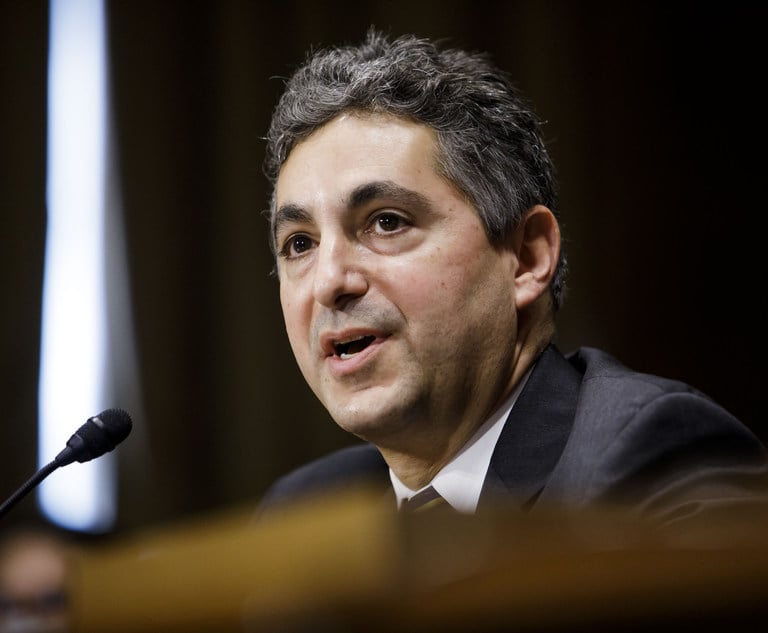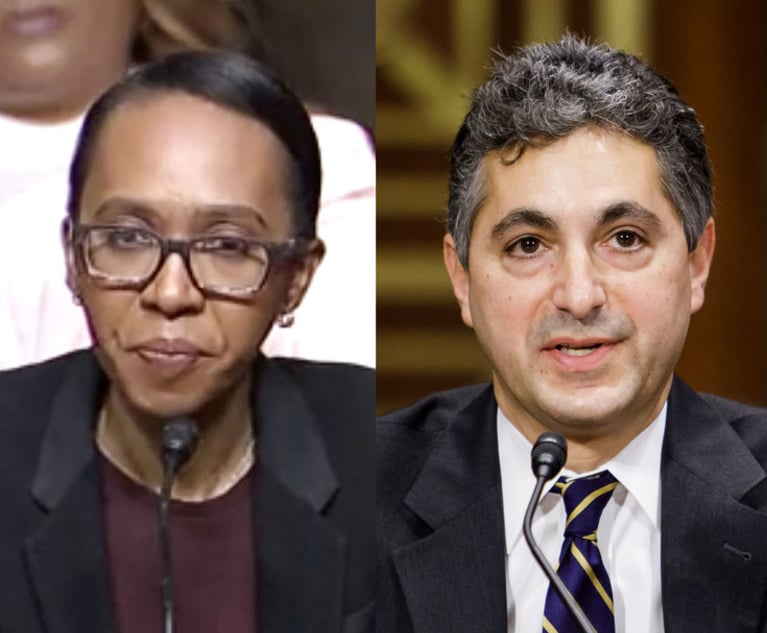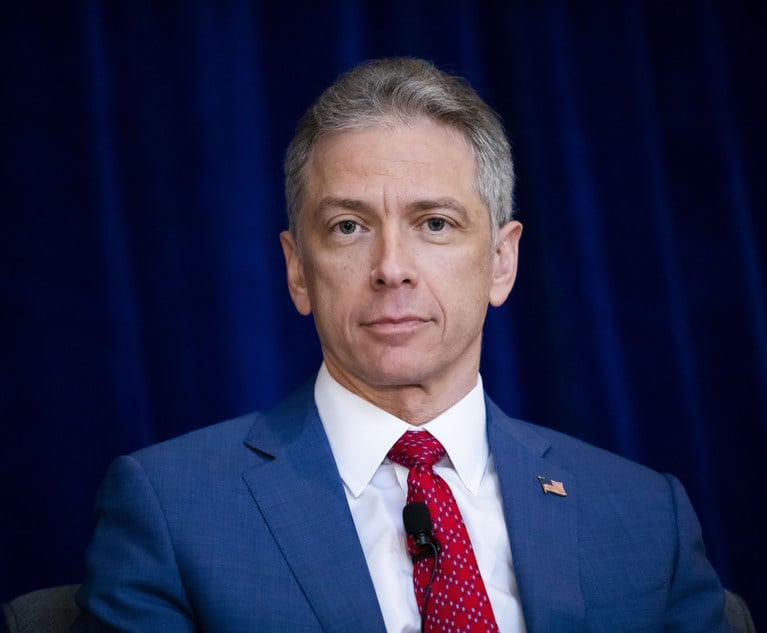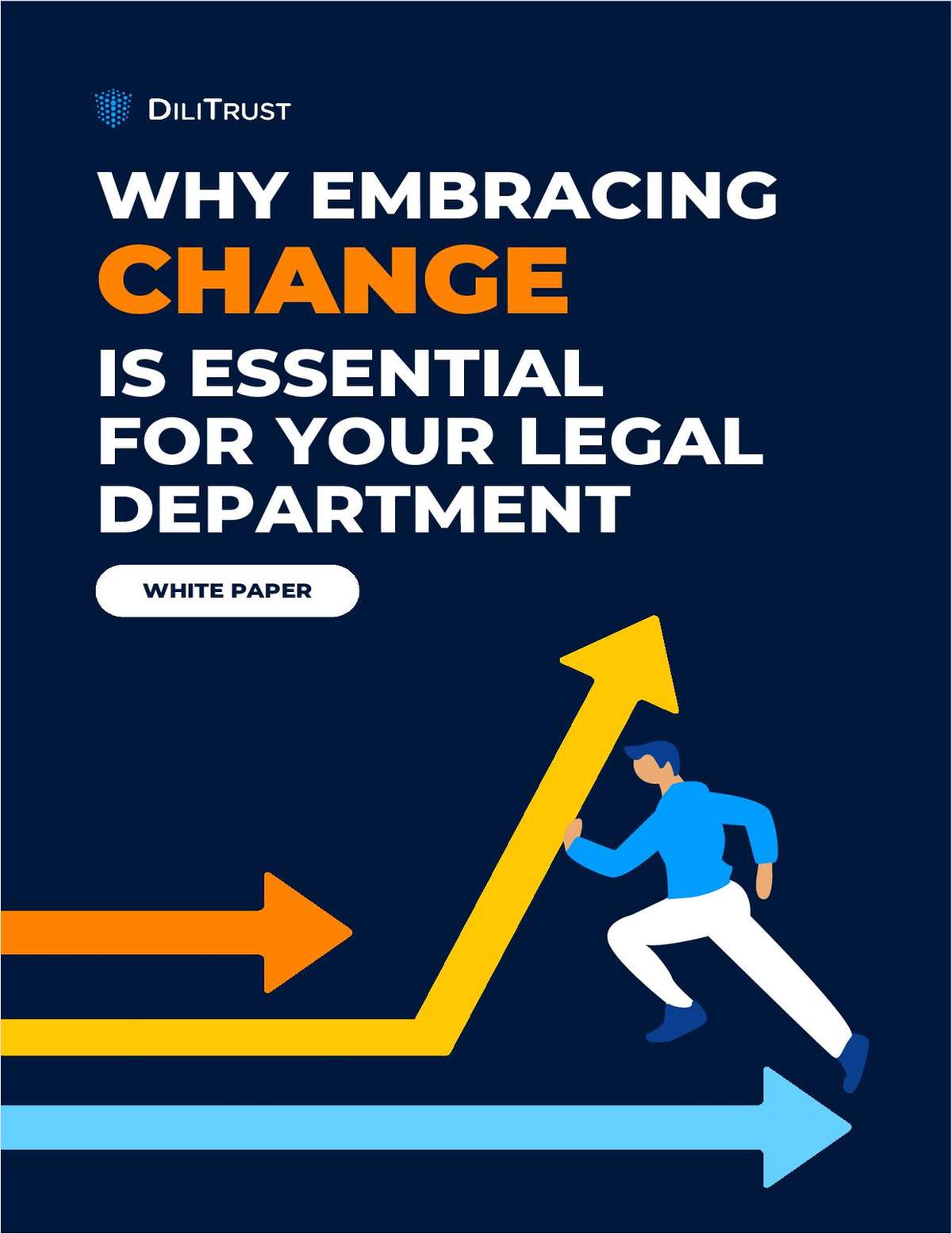Skilled in the Art: This San Francisco Unicorn Won't Be Worth $1B + It's Raining Nine-Figure Patent Verdicts + Auto Industry Avoids 'Recording' Liability
San Francisco artist says Pixar duped her into providing the model for an upcoming film character.
January 28, 2020 at 09:49 PM
9 minute read
Welcome to Skilled in the Art. I'm Law.com IP reporter Scott Graham. Here's what's crossing my desk today:
• San Francisco artist says Pixar duped her into providing the model for an upcoming film character.
• $100 million patent verdicts are becoming a dime a dozen.
• Baker Botts, Orrick, Fenwick and others score a win for the automotive industry over recording artists.
• Axinn snags IP laterals from White & Case and Fenwick.
As always you can email me your feedback and follow me on Twitter.
 From the complaint: Sweet Cicely Daniher and her Vanicorn, above, and Pixar's Guinevere from the upcoming Onward.
From the complaint: Sweet Cicely Daniher and her Vanicorn, above, and Pixar's Guinevere from the upcoming Onward.She sees Unicorns … and a Sneaky Trick by Pixar
San Francisco tattooist Sweet Cicely Daniher likes unicorns. She's authored a book about unicorn imagery. She's painted a unicorn mural on her '72 Chevy van that's been featured in San Francisco Magazine. "At the risk of belaboring the point," her attorneys wrote in a complaint filed Monday in the Northern District of California, "the Plaintiff has had a real thing for unicorns, for a very long time, and they have been a central theme and subject matter of her artistic work, throughout the entirety of her career."
Now, Daniher alleges, Pixar and Disney have tricked her into letting them use her "Vanicorn" in the upcoming film Onward.
In September 2018, Pixar Production Office Manager Jane Clausen contacted Daniher and told her that the company "just stumbled upon a badass photo of you and your amazing van in San Francisco Mag and shrieked with joy." Would Daniher be willing to rent the Vanicorn to Pixar for a "one day music festival/activity day for Pixar employees and families" later that month? "Your van would just be a show piece and not used in any way other than a visual prop," Clausen wrote.
Daniher agreed and signed a contract stating that all rights of every kind "arising out of the use of the Vehicle in connection with the Production shall be solely owned in perpetuity, throughout the universe, by any means, devices, or methods, now known and unknown and in any media, now known and unknown," by Pixar and its assigns.
Daniher's lawyers, Jared Weinstock of Los Angeles and J. Conor Corcoran of Philadelphia, contend that "the Production" means the Pixar employee event held Sept. 14, 2018.
Fast forward eight months, and Daniher learned that Pixar was producing a 3D computer-animated motion picture entitled "Onward." The movie features a character named Guinevere, a dark blue 1972 Chevrolet G10 van with "a big mural of a unicorn on its side, and that is clearly a direct copy and/or visual duplication and/or doppelganger of the Plaintiff's Vanicorn, down to the very same year, make and model," the complaint in Daniher v. Rae alleges.
According to a Pixar fan blog attached to the complaint, Pixar Creative Director Jay Ward took the lead on getting the van built. "This meant finding the right donor vehicle, overseeing the shop crew who was doing the work and granting creative approvals along the way," according to blogger Dan the Pixar Fan.
Daniher says she gave no such approval. She alleges that, after registering her disapproval on Instagram, Onward Producer Kori Rae called her and apologized, allegedly explaining that Pixar had to rely on the employee event subterfuge "because at that time, the movie had no title, and the Defendants believed they couldn't have the Plaintiff sign a non-disclosure agreement without a title."
Daniher is now seeking to enjoin Pixar and Disney from distributing Onward and any Guinevere merchandise that infringes Daniher's copyright.
"To be absolutely clear, the Plaintiff is not claiming that she possesses a general copyright prohibiting, or in any way forbidding, the rightful ability of any person (or any company, for that matter) to paint a unicorn on the [side] of their van," Weinstock and Corcoran write. But, they say, "Defendants have unquestionably used the Plaintiff's copyrighted Vanicorn to be the Guinevere character in Onward."
I reached out to IP litigator Larry Townsend of Owen Wickersham & Erickon for a quick take. Townsend, who's not involved in the case, said that if the allegations are true, Daniher would have a strong case that Pixar had access to her work, which means she'd only have to prove substantial similarity for a finding of infringement.
But Townsend said he doubts the Vanicorn would meet even that relaxed standard. The animal on the Pixar van has wings and no horn, making it a Pegasus, not a unicorn, he says, and they're depicted in different postures. While the similarity between the two vans could be evidence of access, the van itself is "a useful article" that would be irrelevant to the similarity analysis.
"You can't point to, 'We both used the same medium,'" Townsend says.
 |
|A Hundred Million Here, a Hundred Million There
It's raining bazillion dollar patent verdicts.
Just in the last three months, jurors have awarded the following amounts: USAA v. Wells Fargo for $200 million; Meso Scale Diagnostics v. Roche for $137 million; Juno Therapeutics (Bristol-Myers Squibb) v. Kite Pharma (Gilead) for $752 million; USAA v. Wells Fargo for an additional $102 million; and on the same day last week, WiLAN v. Apple for $85 million and Cirba (Densify) v. VMWare for $236 million.
It's a small sample size, to be sure. But it seems as if something's in the air, so I've asked around for theories.
Bill Sigler of Fisch Sigler thinks that, over the long term, larger awards can feed on themselves. "Expert witness comfort is a significant driver in large awards," Sigler said. "And expert comfort in presenting nine figures grows with each successive nine figure judgment. Because juries generally begin damages deliberations at amounts anchored by trial experts, the rising expert tide in advancing nine figures has resulted in an uptick of nine figure jury awards."
Josh Landau, patent counsel at the Computer & Communications Industry Association and author of the Patent Progress blog, thinks a few other factors could be in play too: the Patent Trial and Appeal Board under PTO Director Andrei Iancu has become less effective for defending against invalid patents, he said. And in the current climate jurors might not be feeling warm and fuzzy toward pharma companies (to which I'll add the feeling is probably the same for certain big banks).
Landau also points out that in the Kite and Cirba cases, the defendants were at least accused of obtaining the technology from the patent owner and then declining to partner with or acquire the patent owner. "While those aren't legally factors in damages analysis, that doesn't mean jurors don't think about it," he said.
One more factor: Some elite law firms were trying the cases for patentees. Irell & Manella accounted for three of these verdicts: the two USAA wins and the super-mega Juno verdict. Bartlit Beck Herman Palenchar & Scott (along with Morris, Nichols, Arsht & Tunnell) represented Meso Scale. McKool Smith represented WiLAN. And McKool spin-off Reichman Jorgensen (along with Morris James and Weinberg Wheeler Hudgins Gunn & Dial) represented Densify.
 Judge Harry Edwards (Photo: Diego Radzinschi/ALM) .
Judge Harry Edwards (Photo: Diego Radzinschi/ALM) .D.C. Circuit: Cars Are Not Recording Devices
It's been said that with all the technology they now carry, cars are turning into computers on wheels.
But the D.C. Circuit ruled Tuesday that cars are not "digital audio recording devices" on wheels, even if some of them can copy audio CDs onto on-board hard-disk drives.
The ruling means that Ford, GM, and component makers Denso, Clarion, Mitsubishi and FCA won't be liable to the Alliance of Artists and Recording Companies (AARC), the entity that collects and distributes royalties under the Audio Home Recording Act of 1992, or AHRA.
Judge Harry Edwards reasoned that the AHRA covers consumer devices whose "primary purpose" is reproducing recorded music, and that it expressly excluded computers. The AHRA defines a "digital music recording" as a "material object … in which are fixed, in a digital recording format, only sounds" and no "computer programs."
The automotive hard drives don't meet that definition because they include software for displaying vehicle climate information; software for playing AM/FM and satellite radio; software for displaying video from the rear view camera and so forth.
"Some commenters have observed that the increased role of computers in digital audio recording has made the AHRA's role more marginal than its proponents envisioned," Edwards wrote. Nevertheless, "we cannot enforce the law that AARC thinks Congress should have written rather than the carefully negotiated text that Congress adopted."
Baker Botts partner Scott Keller argued the appeal on behalf of Clarion, with help on the briefs from partner Paul Reilly and senior associate Benjamin Geslison. Denso turned to Orrick, Herrington & Sutcliffe partners Steven Routh, Annette Hurst and Melanie Bostwick. GM was represented by Fenwick & West partners Andrew Bridges, David Hayes and associate Armen Nercessian; Ford was represented by Hogan Lovells partners Jessica Ellsworth and Kirti Datla; Mitsubishi called on Constantine Cannon partners Seth Greenstein and David Golden, and FCA was represented by Venable partners William Coston and Megan Woodworth.
Jonathan Band of Jonathan Band PLLC filed a brief for amicus curiae Computer & Communications Industry Association, Engine, Electronic Frontier Foundation and four others.
The Alliance of Artists and Recording Companies was represented by Axinn Veltrop & Harkrider, with amicus support from the Digital Justice Foundation.
|
IP Laterals – Axinn
On the positive side of the ledger for Axinn, the firm has added two partners in San Francisco. Jeannine Sano joins the firm from White & Case and Eric Krause from Fenwick & West. Also joining from Fenwick is Pan Lee, who will be counsel at Axinn.
It's a reunion. My ALM colleague Samantha Stokes reports that the three IP litigators practiced together at White & Case for about a decade before Krause and Lee left in September 2019 for a five-month stint at Fenwick.
Chad Landmon, chairman of Axinn's IP and Federal Drug Administration practice groups, said the trio brings trial experience and expertise on the high-tech side. "We have always attracted lawyers from big firms because we are a very entrepreneurial law firm that presents a platform for lawyers who are entrepreneurial and want to go out and bring in business," Landmon said.
That's all from Skilled in the Art today. I'll see you all again on Friday.
This content has been archived. It is available through our partners, LexisNexis® and Bloomberg Law.
To view this content, please continue to their sites.
Not a Lexis Subscriber?
Subscribe Now
Not a Bloomberg Law Subscriber?
Subscribe Now
NOT FOR REPRINT
© 2025 ALM Global, LLC, All Rights Reserved. Request academic re-use from www.copyright.com. All other uses, submit a request to [email protected]. For more information visit Asset & Logo Licensing.
You Might Like
View All
Skilled in the Art With Scott Graham: I'm So Glad We Had This Time Together

Design Patent Appeal Splinters Federal Circuit Panel + Susman Scores $163M Jury Verdict + Finnegan Protects Under Armour's House
Law Firms Mentioned
Trending Stories
- 1Deal Watch: Latham, Paul Weiss, Debevoise Land on Year-End Big Deals. Plus, Mixed Messages for 2025 M&A
- 2Bathroom Recording Leads to Lawyer's Disbarment: Disciplinary Roundup
- 3Conn. Supreme Court: Workers' Comp Insurance Cancellations Must Be Unambiguous
- 4To Avoid Conflict, NYAG Hands Probe Into Inmate's Beating Death to Syracuse-Area DA
- 5Scripture-Quoting Employee Sues Company for Supporting LGBTQ Pride
Who Got The Work
Michael G. Bongiorno, Andrew Scott Dulberg and Elizabeth E. Driscoll from Wilmer Cutler Pickering Hale and Dorr have stepped in to represent Symbotic Inc., an A.I.-enabled technology platform that focuses on increasing supply chain efficiency, and other defendants in a pending shareholder derivative lawsuit. The case, filed Oct. 2 in Massachusetts District Court by the Brown Law Firm on behalf of Stephen Austen, accuses certain officers and directors of misleading investors in regard to Symbotic's potential for margin growth by failing to disclose that the company was not equipped to timely deploy its systems or manage expenses through project delays. The case, assigned to U.S. District Judge Nathaniel M. Gorton, is 1:24-cv-12522, Austen v. Cohen et al.
Who Got The Work
Edmund Polubinski and Marie Killmond of Davis Polk & Wardwell have entered appearances for data platform software development company MongoDB and other defendants in a pending shareholder derivative lawsuit. The action, filed Oct. 7 in New York Southern District Court by the Brown Law Firm, accuses the company's directors and/or officers of falsely expressing confidence in the company’s restructuring of its sales incentive plan and downplaying the severity of decreases in its upfront commitments. The case is 1:24-cv-07594, Roy v. Ittycheria et al.
Who Got The Work
Amy O. Bruchs and Kurt F. Ellison of Michael Best & Friedrich have entered appearances for Epic Systems Corp. in a pending employment discrimination lawsuit. The suit was filed Sept. 7 in Wisconsin Western District Court by Levine Eisberner LLC and Siri & Glimstad on behalf of a project manager who claims that he was wrongfully terminated after applying for a religious exemption to the defendant's COVID-19 vaccine mandate. The case, assigned to U.S. Magistrate Judge Anita Marie Boor, is 3:24-cv-00630, Secker, Nathan v. Epic Systems Corporation.
Who Got The Work
David X. Sullivan, Thomas J. Finn and Gregory A. Hall from McCarter & English have entered appearances for Sunrun Installation Services in a pending civil rights lawsuit. The complaint was filed Sept. 4 in Connecticut District Court by attorney Robert M. Berke on behalf of former employee George Edward Steins, who was arrested and charged with employing an unregistered home improvement salesperson. The complaint alleges that had Sunrun informed the Connecticut Department of Consumer Protection that the plaintiff's employment had ended in 2017 and that he no longer held Sunrun's home improvement contractor license, he would not have been hit with charges, which were dismissed in May 2024. The case, assigned to U.S. District Judge Jeffrey A. Meyer, is 3:24-cv-01423, Steins v. Sunrun, Inc. et al.
Who Got The Work
Greenberg Traurig shareholder Joshua L. Raskin has entered an appearance for boohoo.com UK Ltd. in a pending patent infringement lawsuit. The suit, filed Sept. 3 in Texas Eastern District Court by Rozier Hardt McDonough on behalf of Alto Dynamics, asserts five patents related to an online shopping platform. The case, assigned to U.S. District Judge Rodney Gilstrap, is 2:24-cv-00719, Alto Dynamics, LLC v. boohoo.com UK Limited.
Featured Firms
Law Offices of Gary Martin Hays & Associates, P.C.
(470) 294-1674
Law Offices of Mark E. Salomone
(857) 444-6468
Smith & Hassler
(713) 739-1250










